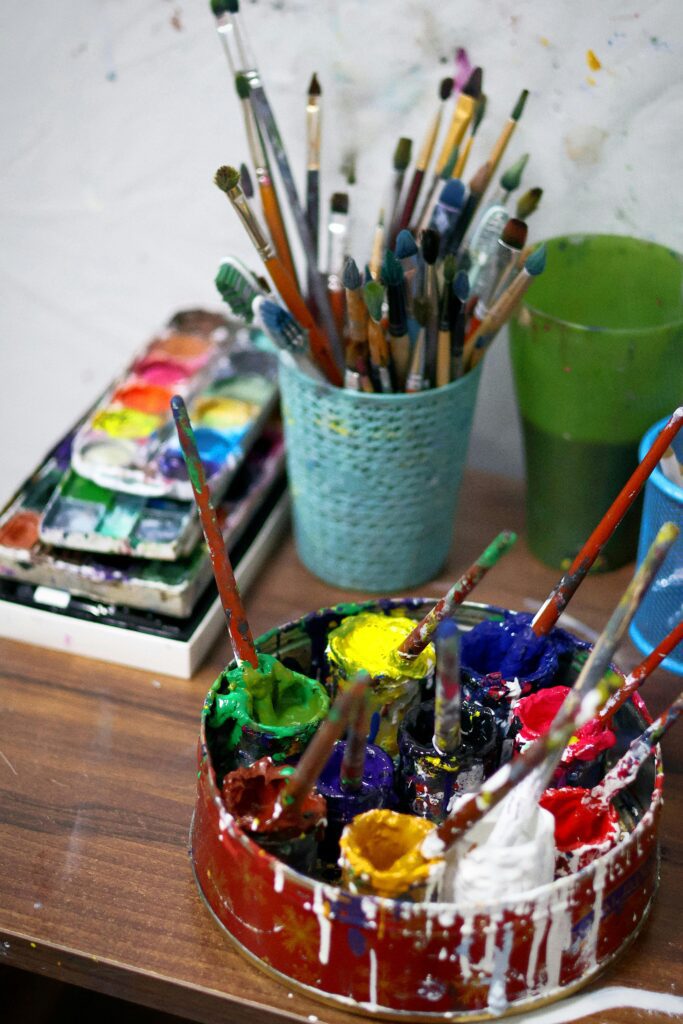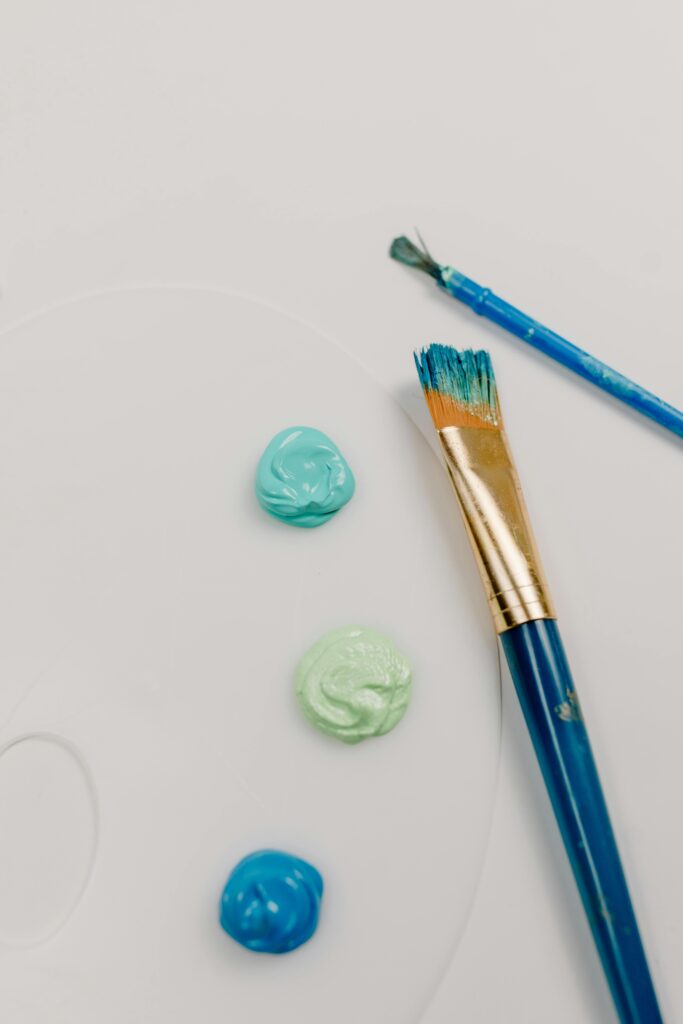Are Art Themes Still Relevant in 2025?

Themes in art are kind of like walking a tightrope over a pit of opinions. Tilt too much toward what everyone else expects, and suddenly your work doesn’t sound like you. Lean too far into your own thing, and people might scratch their heads, wondering what connects it all. That’s the daily juggling act every artist knows too well, how to follow a concept without letting it hijack your voice.
It’s not just about looking good on a wall. Galleries, residencies, and even collectors all have invisible “expectations” baked into what they want to see. Aligning with a theme can make doors swing open, but it can also quietly nudge you into a version of your work that feels… off. You feel it, even if no one says it out loud.
Numbers back it up too. Curated shows that demand thematic cohesion see 60–70 percent of applicants bending their style just enough to “fit.” That’s a huge chunk of artists trying to walk the line between “yes, I belong” and “wait, who am I again?” It shows just how slippery the balance between alignment and dilution can be.
The politics of theme is basically a negotiation with yourself and the world around you. Where does your voice start? Where does the theme begin? How do you let both exist without one swallowing the other? Nail that, and suddenly themes aren’t rules, they’re amplifiers. They give your ideas a megaphone instead of a muzzle.
In this article, we’re going to unpack that balance. You’ll get practical ways to work with themes without losing your rhythm. By the end, you’ll see themes as tools that let your work speak louder, not as chains trying to hold you back.

Why Themes Can Feel Like Pressure
Themes are sneaky. At first, they seem like helpful guides, a way to organize your work, give a show a story, or make your portfolio feel cohesive. But the moment you try to fit yourself neatly into a theme, it can start feeling like a straightjacket. That pressure is real, and it’s something every artist wrestles with at some point. You want to be recognized for your vision, but you also want to be invited into spaces that matter.
It’s worth remembering that a theme doesn’t have to dictate every brushstroke or photograph. Think of it as a dance partner rather than a director. You follow it for rhythm, not for control. When you approach it that way, alignment becomes playful instead of stressful. You get to explore what fits naturally while leaving room for surprises.
Sometimes the hardest part is noticing when you’re bending too far just to fit a label or category. That’s why self-awareness matters. Stop and ask yourself, “Does this feel like me?” If the answer is no, pause before making compromises. Themes are meant to enhance your work, not overwrite it.
The art world loves patterns, but it also respects authenticity. Audiences can tell when you’re forcing a connection. Even jurors and collectors, who see hundreds of works, notice the pieces where the artist is clearly comfortable versus the ones where they are just “fitting in.” That subtle difference affects perception, trust, and ultimately, value.
By treating themes as tools instead of rules, you create space for your own voice to emerge clearly. Your work gains cohesion without losing its edge. Alignment becomes a strategy, not a trap.
Finally, learning to handle theme pressure is practice. Every exhibition, every project, every residency teaches you how much you can lean in without losing yourself. Over time, it gets easier to see the difference between collaboration with a theme and surrendering to it.
Finding the Thread That’s Truly Yours
Consistency in voice is what keeps your work recognizable, even across themes. That thread might be a color palette, a subject you return to, or a visual energy that’s unmistakable. Whatever it is, this is your anchor. Themes come and go, but your thread stays. When viewers notice it, they start connecting the dots between pieces, exhibitions, and collections, it’s subtle, but powerful.
Identifying that thread isn’t always obvious. It requires reflection: looking at your past work and noticing patterns you may have taken for granted. Ask yourself, “What keeps recurring in my choices?” Once you spot it, you can use it intentionally to guide how you align with any theme.
The beauty of this thread is it gives you freedom. You don’t have to sacrifice creativity to fit a theme. Instead, the theme frames your work in a way that amplifies what’s already there. It’s like setting a spotlight to highlight your strengths without changing the essence of the performance.
When curators or collectors look at your work, that thread becomes your signature. Even if you explore new subjects or aesthetics, the thread signals continuity. It builds trust that your next piece will carry the same thoughtful approach, even if it surprises.
The challenge is balancing consistency with evolution. Don’t let the thread become a cage. Instead, think of it as a spine, your work can bend and flex, but it still holds its shape. That balance is what makes alignment with themes seamless and authentic.
Finally, once you have this clarity, themes stop feeling like a burden. They become collaborators in your process rather than obstacles, giving structure to ideas without diluting the voice that defines you.
Practical Ways to Align Without Losing Yourself
Start by dissecting the theme itself. What is it really asking for? What are the boundaries, and what’s open to interpretation? Most calls, residencies, or exhibitions have room for nuance; they aren’t as rigid as they first seem. Understanding this helps you find spots where your work naturally intersects with the theme without compromise.
Next, map your work against the theme. Pick pieces that resonate and ask why. Maybe it’s a subject, a mood, or even a conceptual idea that connects. Once you identify those links, you can choose how to present them thoughtfully. It’s alignment with intent, not alignment with fear.
Templates can help here. Visual planning tools, digital sketches, or mood boards let you see your work in context before committing to final pieces. You can play with arrangements, experiment with variations, and still keep your core voice intact. That visual rehearsal makes the alignment process less stressful.
Language matters too. The way you frame titles, statements, or captions can strengthen a theme without compromising your meaning. Small wording choices create cohesion while keeping the underlying narrative true to your perspective.
Collaboration with curators or peers can be invaluable. Ask questions about flexibility or intentions behind a theme. Understanding their goals helps you position your work authentically, not just obediently.
Finally, remember that alignment isn’t permanent. Every theme is temporary. Use it as an opportunity to stretch your work, then return to your own rhythm. That approach ensures your voice remains the constant, not the theme itself.

Recognizing When Alignment Becomes Dilution
It’s easy to slip into dilution without realizing it. You might tweak colors, change compositions, or adjust ideas so much that the work still “fits,” but no longer feels like yours. That’s why reflection is critical before finalizing anything for a themed project.
Check for your signature markers, those elements that make your work unmistakably you. If they’re missing or muted, pause. Alignment should complement, not erase. Even subtle gestures, like maintaining your brushstroke style or recurring motifs, anchor your work in authenticity.
Feedback is helpful here. A trusted peer or mentor can spot when a piece is straying too far from your voice. They can point out areas where alignment is enhancing your work versus areas where it’s softening it unnecessarily.
It’s also about intention. Ask yourself: “Am I changing this piece to genuinely engage with the theme, or just to get approval?” That distinction is subtle but profound. When intention drives the change, alignment feels natural; when fear drives it, dilution creeps in.
Over time, learning this balance strengthens intuition. You begin to sense immediately whether a theme is an amplifier or a constraint for a particular piece. That instinct is invaluable for making confident choices.
Finally, remember that some risk is okay. Not every piece must perfectly fit a theme. Leaving space for surprises or tension keeps your portfolio interesting, honest, and uniquely yours.
Using Themes to Amplify, Not Replace, Your Voice
When themes work as intended, they give your work more reach. They make it easier for viewers, jurors, and collectors to understand patterns, intentions, and connections. Your voice doesn’t get lost; it gets heard more clearly against a structured backdrop.
Start by identifying areas where your work naturally intersects with the theme and lean into those. Use the theme to highlight strengths rather than force changes. This approach creates harmony and energy, rather than compromise.
Think about series work. Themes can act as a framework that makes your narrative more coherent. Each piece speaks to the next, creating a rhythm that’s easier for audiences to follow. That rhythm makes your work more memorable, more “sticky,” and more likely to resonate.
Themes also help with marketing and presentation. Cohesive work is easier to photograph, frame, or showcase in print and online. When your voice is amplified through a structured lens, your audience engages more quickly, remembers more clearly, and trusts your vision.
Finally, the real power is confidence. When you know how to navigate themes without losing yourself, you approach each project with calm clarity. That confidence radiates in the work, in the presentation, and in the conversations that follow. Alignment becomes a tool for impact, not a compromise.
Experiment Within the Frame
Themes don’t have to be straightjackets, they can be playgrounds if you approach them right. Once you know your core voice, try experimenting within the theme’s boundaries. Play with scale, color, or perspective while keeping your signature elements intact. That way, the theme adds structure, but your work still surprises and delights.
One practical trick is to make a small test series first. Use mini sketches, digital mockups, or quick studies to see how your pieces interact with the theme. It’s like sampling ingredients before cooking a full meal, you get a feel for how flavors (or visual ideas) mix without committing fully.
Another approach is to explore contrast. A theme can highlight differences in your work, not just similarities. Juxtaposing pieces that respond differently can make your series feel dynamic and layered, showing depth and versatility without losing cohesion.
Themes also allow for playful storytelling. Think of each piece as a line in a conversation. How does your interpretation of the theme add to that dialogue? Even small, subtle choices, a repeated motif, a nod to previous work, create resonance across a series.
Remember, experimentation isn’t rebellion. It’s thoughtful play. You’re not abandoning alignment, you’re exploring its edges. That’s where creativity really shines, and where your voice stands out.
Finally, don’t hesitate to reflect afterward. Review which experiments enhanced your work and which diluted it. Over time, these exercises sharpen your sense of what alignment looks like for you personally.
Titles, Statements, and Words Matter
Alignment isn’t just visual. Language is a powerful tool for keeping your voice intact while engaging with a theme. A well-crafted title or statement can connect your work to the theme without altering its essence. Words become bridges between your intention and the audience’s understanding.
Start with your titles. They can hint at the theme, nod to the context, or highlight an idea without rewriting your work. Even a single phrase can give your piece cohesion in a show while preserving your perspective.
Artist statements are another lever. A short note explaining your approach, your recurring motifs, or your personal connection to the theme adds clarity. It’s a chance to show how your work fits without losing its identity.
Language also helps you guide viewers’ attention. You can emphasize what’s consistent across pieces, highlight your signature thread, and show intentionality. That creates trust and comprehension without compromising creativity.
Collaborating with curators on language is smart too. Their insights on thematic framing can help you position your work authentically. You don’t have to change your art, just let the words do some of the alignment work.
Finally, keep your language flexible. Not every piece needs a title that references the theme. Sometimes subtlety speaks louder than explanation. That balance between words and visuals keeps your voice alive while participating fully in the theme.

Know When to Say No
Not every theme will serve your voice, and part of mastery is recognizing that early. If a project asks you to twist your work so much that it loses its essence, it’s okay to walk away. Saying yes blindly might get exposure, but it can also dilute your brand and creative energy.
Evaluate opportunities against your core thread. Ask yourself: “Will this theme amplify my work or force it to wear someone else’s clothes?” If the answer is the latter, declining is a strategic, not fearful, choice.
It helps to create criteria for alignment. That could be your subject matter, visual approach, or conceptual values. Use this as a checklist before committing. It keeps decisions objective and protects your voice without overthinking every opportunity.
Saying no strategically also builds respect. Curators, galleries, and collaborators notice when artists have clear boundaries. It signals confidence, professionalism, and self-awareness, qualities that add value to your practice.
Remember, alignment is about collaboration, not surrender. You can participate fully in some themes and skip others entirely. Your portfolio, career, and creative energy benefit more from thoughtful participation than from trying to be everything for everyone.
Finally, saying no creates space. You free up time and energy for projects that truly resonate, letting your voice be amplified rather than drowned out by compromise.
Build Tools That Keep You Aligned
Templates, mood boards, and digital catalogs are your best friends when navigating themes. They let you plan ahead, visualize cohesion, and keep your core voice at the forefront. Once you create a system, aligning with a theme feels structured instead of stressful.
For example, the Art to Hearts Template Catalog offers ready-to-use tools to showcase series, organize portfolios, or mock up exhibition layouts. You can drop in images, adjust color palettes, and maintain your signature style while responding to thematic guidelines. It’s like having a design assistant that respects your creative voice.
Mood boards are equally powerful. Collect reference images, sketches, and colors that feel like you. Then overlay the theme’s parameters to see where natural intersections occur. This visual roadmap makes alignment deliberate, not accidental.
Templates also save time. Instead of reworking presentations or social content from scratch, you tweak existing layouts. That frees mental energy for experimentation, refinement, or deep studio practice. It’s alignment without exhaustion.
Collaborators benefit too. Shared templates or boards allow curators, assistants, or peers to understand your visual system without imposing on your creative choices. It keeps everyone on the same page and reduces friction in the process.
Finally, revisit these tools regularly. Update templates, mood boards, or catalogs to reflect new explorations. Themes change, but your thread and your voice remain constant, and these tools make it easy to maintain that clarity across projects.

Let Themes Enhance Your Story
Ultimately, themes are storytelling tools. They give context to your work, making connections clearer to audiences, jurors, and collectors. Done right, themes amplify your narrative instead of muting it. They help people see not just individual pieces, but the trajectory of your creative journey.
Think of each exhibition as a chapter. Themes are the frames, but your work writes the sentences. When your voice remains constant within that frame, the story is compelling, memorable, and uniquely yours.
Using themes this way also builds recognition. People start noticing your approach, your recurring ideas, and your signature thread. Recognition builds credibility, which in turn builds market value and influence in the art world.
Themes can even guide future work. They create opportunities to explore ideas you might not have tackled otherwise, while still feeding your core narrative. It’s a way to experiment safely, without compromising what defines you as an artist.
Finally, remember that alignment is temporary, but voice is permanent. By treating themes as amplifiers rather than rulers, you ensure your work stays authentic, engaging, and impactful, every time it hits the wall, online, or in a portfolio.
